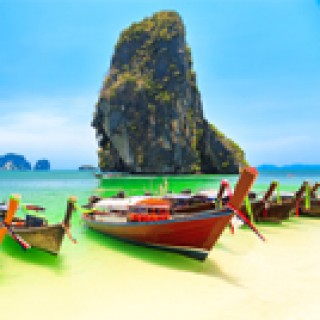Langtang Valley & Gosainkunda Trek - 13 Days
-
Destination Nepal
-
Trip GradeModerate
-
Trip Cost Contact
Trip Highlights
- Explore the Ancients Buddhist Monastery and cheese factory at Khyanjin Gompa.
- Spectacular Himalayas view of Ganesh, Langtang and Annapurna.
- Walking through the beautiful valley of Langtang national park.
- Tamang and Tibetan ethnic culture and village.
- Visit Holly Gosaikunda Lake, Parbati lake and Sarowsoti Lake, etc.
About Trip:
Langtang valley is situated directly north of Kathmandu in the Central Himalayan Region. This area was declared a National Park in 1976 and remains the second largest Park in Nepal, covering 1710 sq.km. Mountainous terrain south of Nepal-Tibet (China) border. Within its boundaries are some 45 villages, with the main objective of the park is to preserve the regions by allowing the local to follow the traditional land use practices which are compatible with resource protection. The area offers a range of cultures with the main three ethnic peoples living in are the Tamangs, Yolmus and Bhotias who have originated from Tibet in the past 500 years till the mid 20th century. In a southern section of the park lies a small area of sub-tropical chestnut forest, along with unique Sal forest. The hill forests (2000-2,600m) across the southern slopes of the park consist of Chir Pine, Rhododendron, Nepalese Alder and Oak. Moving north and higher, the Montane zone (2,600-3000m) are mainly Mountain Oak, fading to Silver Fir,Hemlock and Larch in the lower sub-alpine zone (3000-3,6000m); throughout these zones, several species of Rhododendron trees form a twisted and colourful under story, continuing higher to tree line Birch and Fir forest are the last to survive. It is here at 3,600-4000m that Juniper and Rhododendrons shrubs slowly dissolve into the expansive alpine grassland meadows. Here the elusive snow leopard is still thought to comb the alpine heights for prey. The park is also well known for its populations of red panda, Himalayan black bear, wild dog, Himalayan thar, ghoral (mountain antelope) and more than 250 species of birds.
Langtang at present is the third popular trekking area in Nepal after Annapurna and Everest region. This fabulous trek, a perfect combination of moderate and vigorous walk leading to the high alpine valley with the backdrop of high snow capped peaks, in the spring this place is alive with wild flowers. Become a pilgrim, and head to the shimmering lakes at Gosainkund. There you will find peace and serenity alongside the Buddhist and Hindu pilgrims. It is no wonder this area is sacred, affording
views extending all the way to the Annapurna. Cross Laurabina Yak La Pass, (4,615 m), adjoining the Gosainkund and Helambu regions. At this higher altitude, the terrain will transform to arid alpine above tree line and the villages will become sparser. Descend on steep mountain trails high above the valley. Culturally, Langtang area is one of the most culturally wealthy regions in Nepal. Prominent to this region north of Kathmandu, are peoples of Tibetan origin on these Tamangs Heritage Trail.
Outline Itinerary
Itinerary
Day 01: Arrival
Day 02: Kathmandu to Syabrubesi (1470m)
Day 03: Syabrubesi to Lama Hotel (2400m)
Day 04: Lama Hotel to Langtang Village (3430m)
Day 05: Langtang Village to Kyangjin Gompa(3870m)
Day 06: Kyangjin Gompa
Day 07: Kyangjin Gompa to Lama Hotel (2470m)
Day 08: Lama Hotel to Thulo Syabru (2260m)
Day 09: Thulo Syabru to Sing Gompa (3330m)
Day 10: Sing Gompa to Gosaikunda (4460m)
Day 11: Gosainkunda to Dhunce(1950m)
Day 12: Dhunche to Kathmandu (2175m)
Day 13: Final Departure
Perfect Everest Trek Arrangement
I spent very memorable days in the Everest region in Nepal. I used to dream to see this highest peak of the world and now I arrested it in my camera. My guide arranged everything and helped me a lot. He did not let me feel tired and boring. I…
 Stephen Gray, AustraliaJanuary 21, 2025
Stephen Gray, AustraliaJanuary 21, 2025
Certificates & Partners





